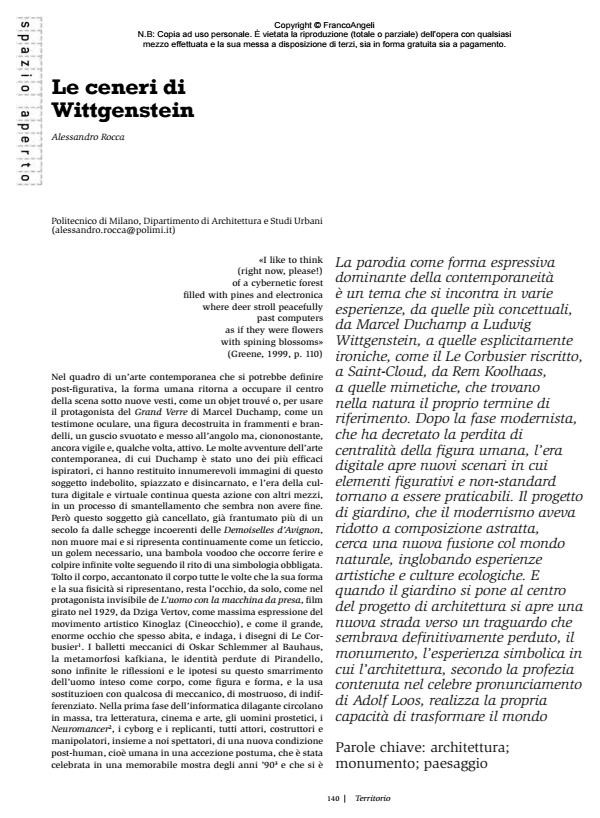Wittgenstein’s ashes
Journal title TERRITORIO
Author/s Alessandro Rocca
Publishing Year 2015 Issue 2014/71
Language Italian Pages 9 P. 140-148 File size 846 KB
DOI 10.3280/TR2014-071021
DOI is like a bar code for intellectual property: to have more infomation
click here
Below, you can see the article first page
If you want to buy this article in PDF format, you can do it, following the instructions to buy download credits

FrancoAngeli is member of Publishers International Linking Association, Inc (PILA), a not-for-profit association which run the CrossRef service enabling links to and from online scholarly content.
La parodia come forma espressiva dominante della contemporaneità è un tema che si incontra in varie esperienze, da quelle più concettuali, da Marcel Duchamp a Ludwig Wittgenstein, a quelle esplicitamente ironiche, come il Le Corbusier riscritto, a Saint-Cloud, da Rem Koolhaas, a quelle mimetiche, che trovano nella natura il proprio termine di riferimento. Dopo la fase modernista, che ha decretato la perdita di centralità della figura umana, l’era digitale apre nuovi scenari in cui elementi figurativi e non-standard tornano a essere praticabili. Il progetto di giardino, che il modernismo aveva ridotto a composizione astratta, cerca una nuova fusione col mondo naturale, inglobando esperienze artistiche e culture ecologiche. E quando il giardino si pone al centro del progetto di architettura si apre una nuova strada verso un traguardo che sembrava definitivamente perduto, il monumento, l’esperienza simbolica in cui l’architettura, secondo la profezia contenuta nel celebre pronunciamento di Adolf Loos, realizza la propria capacità di trasformare il mondo
Keywords: Architettura; monumento; paesaggio
Alessandro Rocca, Le ceneri di Wittgenstein in "TERRITORIO" 71/2014, pp 140-148, DOI: 10.3280/TR2014-071021